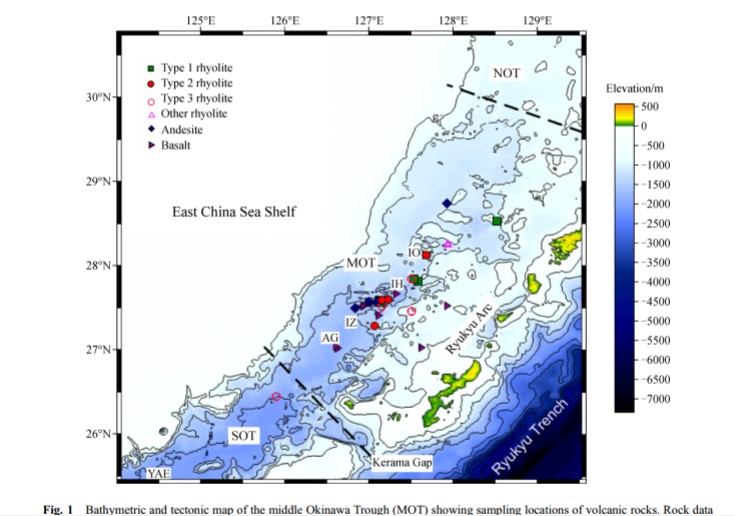In the middle Okinawa Trough (MOT), rhyolites have been typically considered as products of crystallization differentiation of basaltic magma as a feature of bimodal volcanism. However, the evidence is insufficient. The research team leading by Professor Zeng Zhigang compared chemical trends of volcanic rocks from the MOT with fractional crystallization simulation models and experimental results and utilized trace element modeling combined with Rayleigh fractionation calculations to re-examine fractional crystallization processes in generating rhyolites. Both qualitative and quantitative studies indicate that andesites, rather than rhyolites, originate by fractional crystallization from basalts in the MOT. Furthermore, we established two batch-melting models for the MOT rhyolites and proposed that type 1 rhyolites are produced by remelting of andesites with amphiboles in the residue, while type 2 rhyolites are derived from remelting of andesites without residual amphiboles. It is difficult to produce melts with a SiO2 content ranging from 62% to 68% either by magmatic differentiation from basalts or by remelting of andesites, and this difficulty might help account for the compositional gap (Daly gap) for bimodal volcanism in the Okinawa Trough.

https://link.springer.com/article/10.1007/s11707-017-0638-z
Corresponding Author: Prof. Zhigang Zeng
Contact: Ms. Fengfan Yang Email: fengfanyang@qdio.ac.cn
|
|

Address: 7 Nanhai Road, Qingdao, Shandong 266071, China
Tel: 86-532-82898902 Fax: 86-532-82898612 E-mail: iocas@qdio.ac.cn


